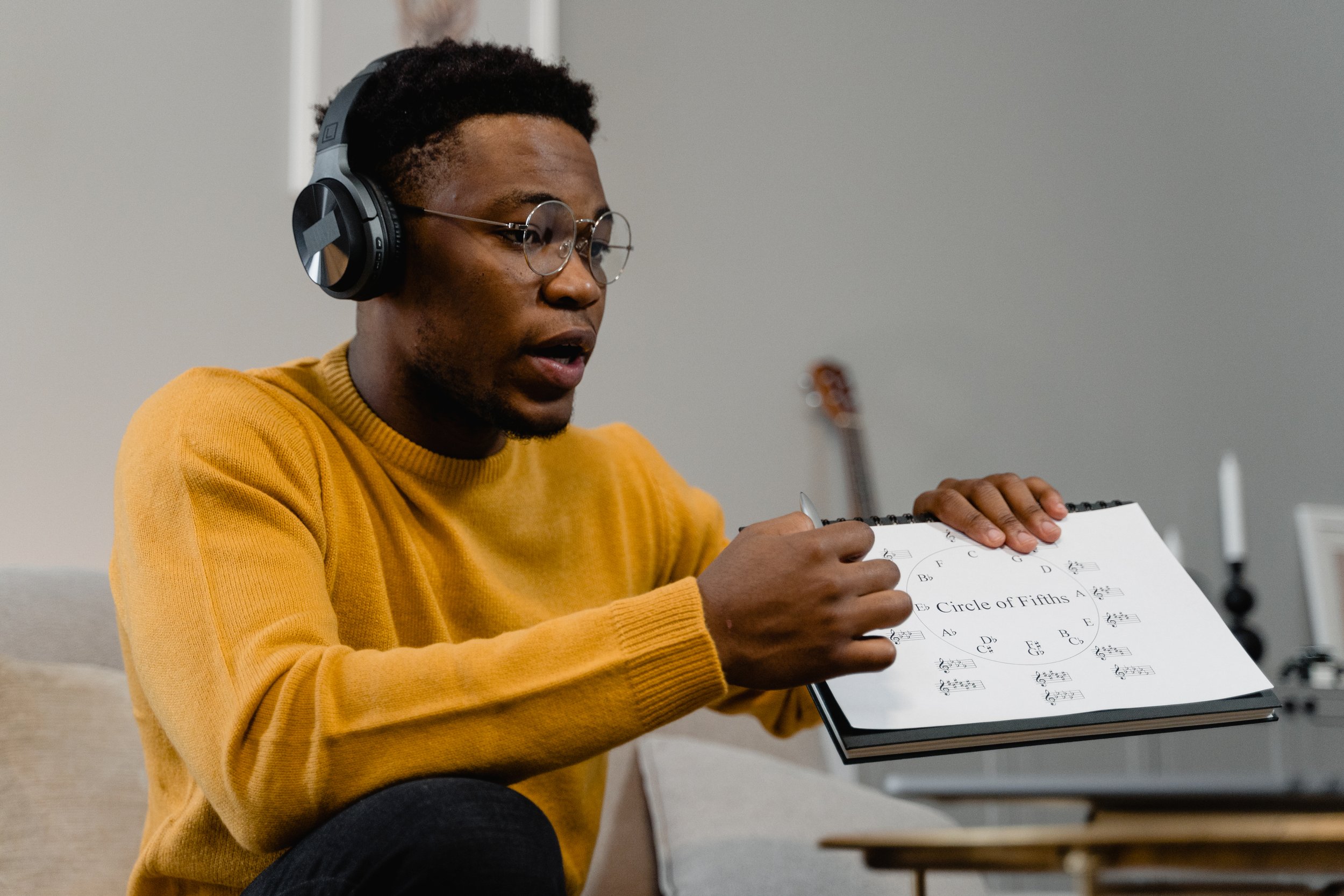4 Online Resources Where You Can Learn the Basics of Music Theory
Knowing about the basics of music theory can be a helpful skill. It’s thus no surprise that more educational apps are incorporating music lessons into their archives, with language-learning platform Duolingo reportedly developing a music-learning app amid its continued user and revenue growth. This app will combine theoretical knowledge of relevant learning science research and hands-on teaching experience.
While Duolingo’s higher-ups have yet to elaborate upon the music expansion as of March 2023 publicly, there’s no need to worry. There are plenty of other resources already available online for students to learn about the basics of music theory. Here are a few of our favorites below.
ToneSavvy
ToneSavvy is the merged product of TonedEar and eMusicTheory where developers David Crane and Rob Whelan offer terrific interactive lessons. They have a range of exercises available for learners: for example, Note Names requires students to identify the names of notes that appear on the staff, while Interval Building asks students to build intervals on the staff by placing the second note after only being given a starting note and the name of an interval.
These practical music theory exercises are effective for immediately improving your understanding of music concepts, as well as your speed at interpreting from the staff.
Studocu
Students who appreciate a more straightforward teaching structure can peruse the online study notes on Studocu. Studocu is a notes-sharing app where other students studying music theory from top educational institutions can share their annotations from class. This ensures that the notes are tailored to how students closer to your age may approach music theory.
A quick search of “music theory” in Studocu can lead you to a summary of tonal harmony from Texas State University or lecture notes on the four music elements from the University of Washington. Studocu also includes free documents, and these can be paired with a comprehensive practice set with flashcards and practice questions to make sure that you digest the lesson efficiently.
Adam Neely
NYC-based composer Adam Neely started his YouTube channel of music theory-drenched video content in 2006. Here, he includes relatable and easy-going content such as simple Q&As or deep dives into viral moments like the TikTok sea shanty trend. In the latter, he and professor Phillip Ewell, who teaches music theory at Hunter College in New York, discuss the hidden biases that affect the way music theory is taught. Neely’s place in YouTube puts him firmly outside of the world of academia, and this unconventional way of teaching can greatly appeal to visual and auditory learners.
Easy Theory for Music Producers
If you were hoping to understand music theory precisely to become a better DJ or music producer, then look no further than Easy Theory for Music Producers. This is a free music theory page that’s specifically designed to help you learn fundamental concepts of music as easily as possible. In fact, everything is taught using basic numbers and pictures without using score notation, so that even beginners who don’t read sheet music can understand.
To learn more about music, check out Building Beats bbWorkshops where we provide in-school and after-school programs at schools and community centers throughout New York City and Los Angeles.
For more on DJ’ing, producing, and business skills, check out our other articles on Building Beats.

